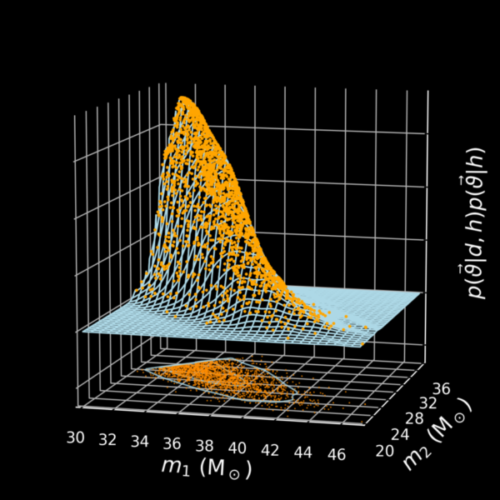Posterior probability distribution of the masses of the binary black hole GW150914. The higher the surface, the more probable the binary had those masses. The orange points represent random samplings of the posterior using an MCMC sampler. The projection below the surface shows the 50- and 90-percentile credible regions obtained from the samples. Figure generated using PyCBC Inference.
To do science with gravitational waves one must accurately infer the properties of the source. From measurements of a binary’s masses, spins, and other properties, we can test general relativity, determine the neutron-star equation of state, constrain the Hubble constant, and more.
I am the primary developer of PyCBC Inference, an open-source, Python-based software suite for gravitational-wave parameter estimation. This is the primary tool I use for my research, and has been used by other groups for their own studies. We are continually improving PyCBC Inference to make it more efficient, powerful, and easier to use. Last year I organized a workshop to teach researchers how to use it, and about Bayesian inference and its application to gravitational-wave astronomy in general. I plan to organize more such workshops in the future.
See the documentation page to learn more about PyCBC Inference. It is a part of the broader PyCBC package, which can be downloaded via pip. If you would like to contribute, you can checkout our source code on github.
